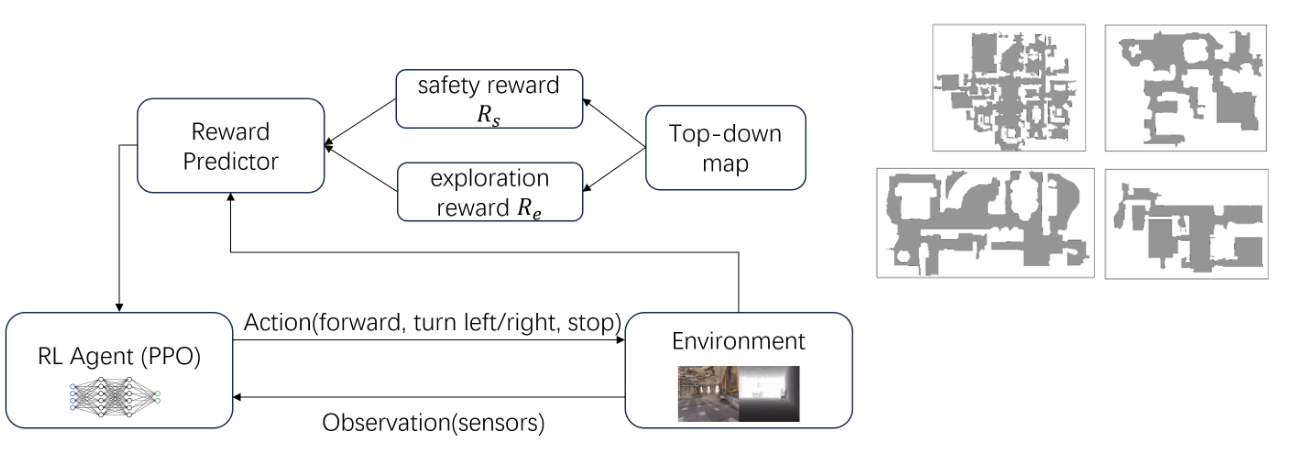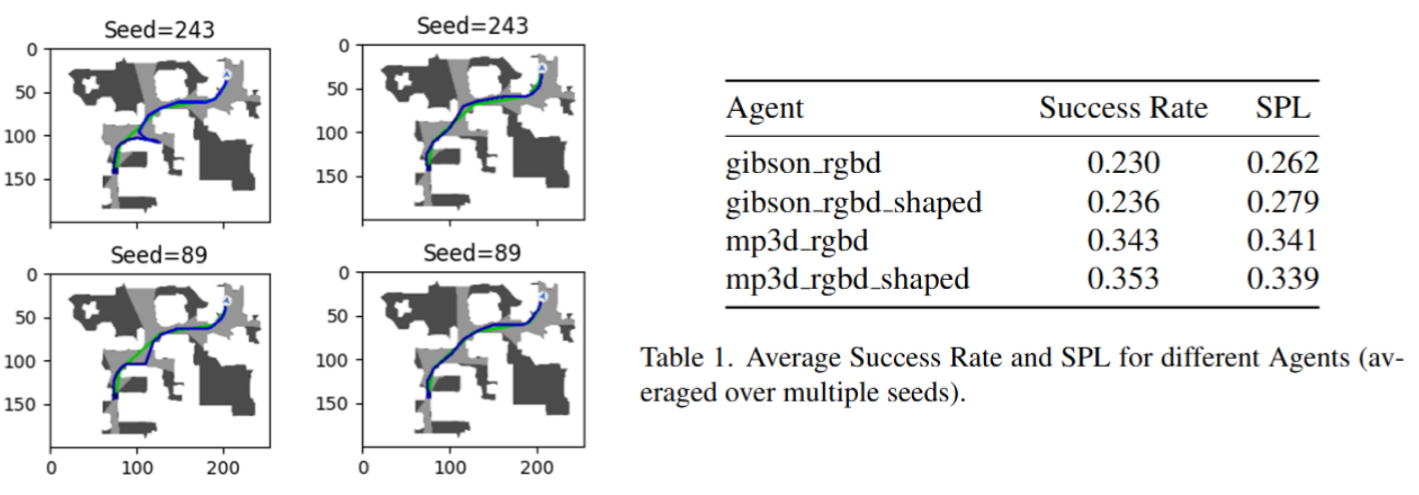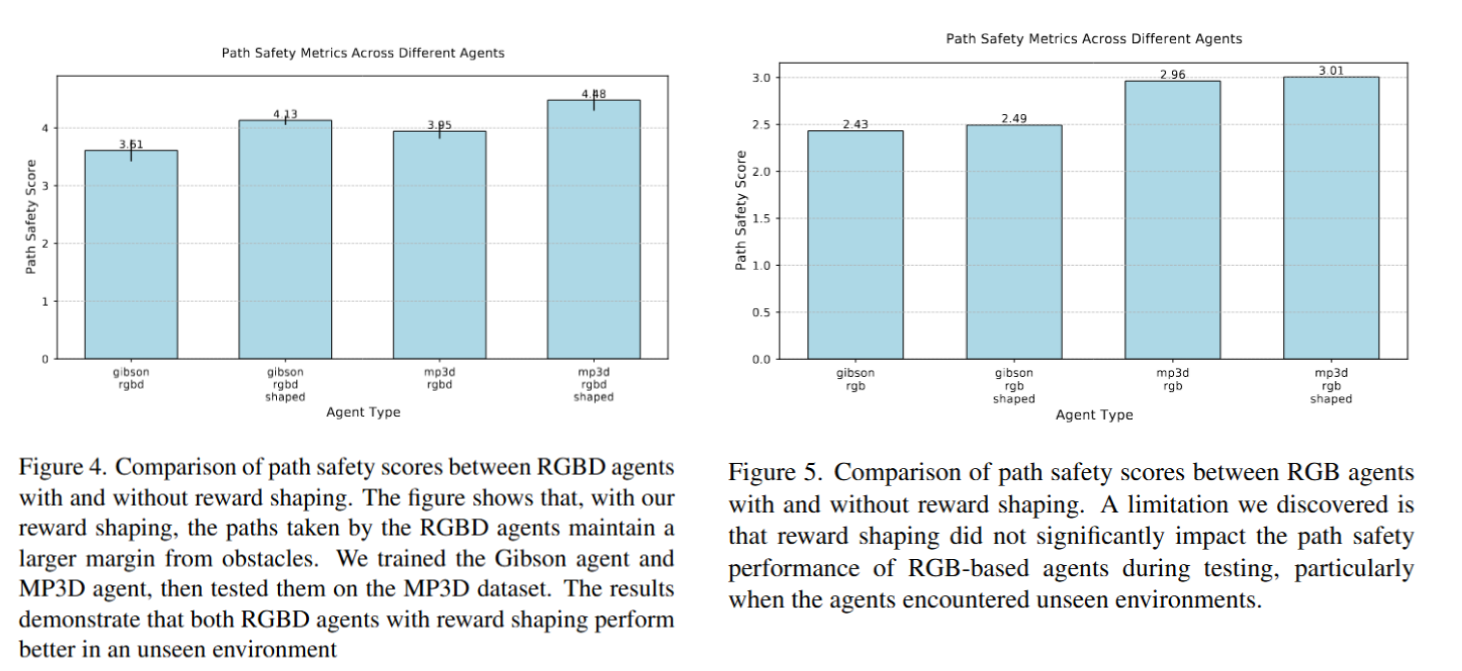Towards Safer Navigation - Reward Shaping with Prior Topographic Knowledge
Enhancing navigation safety in deep reinforcement learning agents through reward shaping with prior map information
Motivation
Modular navigation is reliable yet rigid; end-to-end RL is flexible but often unsafe near obstacles. We aim to train agents that not only reach goals but also maintain human-like safety margins during navigation.
Method Overview
We introduce safety-aware reward shaping using prior topographic knowledge to form a continuous “safety gradient” rather than a binary collision penalty. The agent is penalized in a near-obstacle “Penalty Zone” and rewarded in a “Safety Zone” that preserves a sensible buffer, balancing progress and safety. Training uses PPO with multi-modal inputs (RGB, depth, GPS/compass) for robust perception and control.


Results
We train and evaluate in Habitat on MP3D and Gibson. Beyond Success and SPL, we measure Path Safety (average distance to nearest obstacle):
- Path Safety: +6 cm over baseline
- Success / SPL: Competitive with baseline while improving safety
- Training: Converges in ~5M steps (≈10 hours); stable across runs; improved sample efficiency


Tech Stack
- Deep Learning Framework: PyTorch 1.9+
- RL Algorithm: Proximal Policy Optimization (PPO)
- Simulation: Habitat-Sim, Habitat-Lab
- Computer Vision: OpenCV, PIL
- Neural Networks: ResNet18, LSTM
- Environment: Python 3.8+, CUDA 11.2
- Visualization: Matplotlib, TensorBoard
Next Steps
Scale up training, refine reward shaping, and transfer to real robots. Extend to dynamic environments with moving obstacles and explore multi-agent coordination for safe, efficient navigation.
Project Impact
This research contributes to the field of safe autonomous navigation by:
- Demonstrating effective integration of prior knowledge in RL
- Providing a novel safety-aware reward shaping approach
- Establishing new evaluation metrics for navigation safety
- Bridging the gap between simulation and real-world deployment
Project Team
- Lead Researcher: Jiajie Zhang (zhangjj2023@shanghaitech.edu.cn)
- Advisor: Professor Sören Schwertfeger
- Institution: MARS Lab, ShanghaiTech University
Related Resources
- Project Slides: Deep Learning Project Defense
- Technical Report: Detailed Project Report
- Code Repository: GitHub Repository
This project marks a significant step towards creating safer, more reliable autonomous agents by fundamentally rethinking how they learn to navigate, bridging the gap between task completion and real-world practicality.